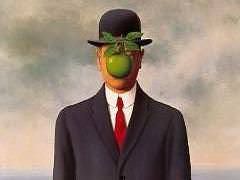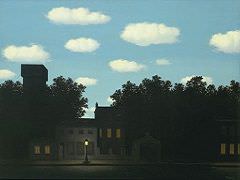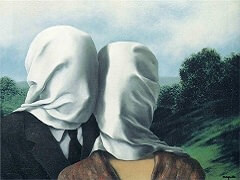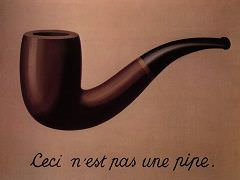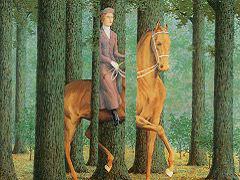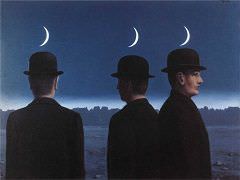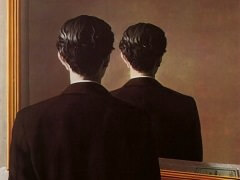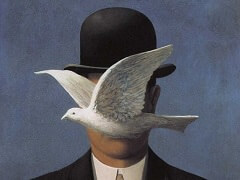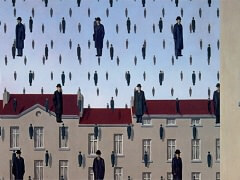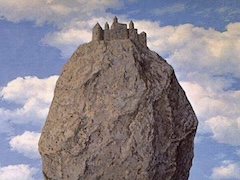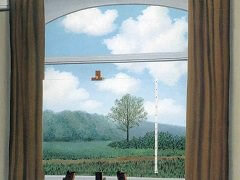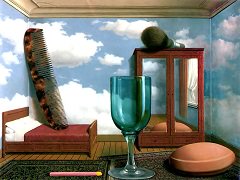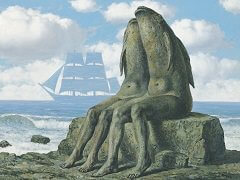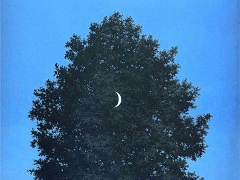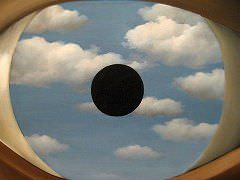The Six Elements, 1928 by Rene Magritte

During the 1928-30 period particularly, Magritte painted forms which were actually denaturalized picture frames, sometimes containing nothing at all, sometimes containing words, sometimes with a plank showing the grain in the wood, and sometimes with a collection of unconnected elements. The last-mentioned type culminated in the painting On the Threshold of Liberty of 1929, which is composed of eight parts surrounding a cannon. The Six Elements preceded this painting and shows fire, clouds, woods, a house, the bells on a horse's harness, and a female torso. In the work as a whole there is a poetic eroticism.
The frame is baroque in its fancifulness and irregularity, lending tension to the six fragments. From the purely plastic viewpoint the work is masterly in its composition. The breasts, the luxuriant woods, the infernal fire, and the clouds in the blue sky all belong to the realm of nature. The bells evoke sound, and the fragment of a facade, flanking the dreamy sky, keeps the composition as a whole close to the earth. A house always meant many things to Magritte; it was not merely a shelter, not merely a framework, but the center from which he experienced the dialect between the "inside" and the "outside," the finite and the infinite.

